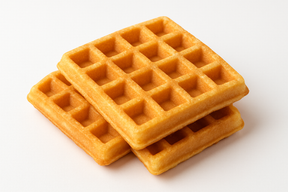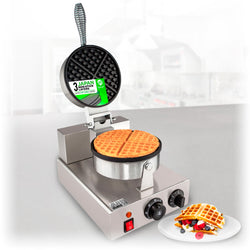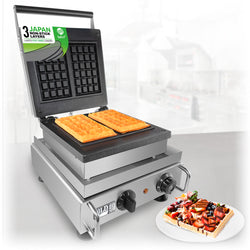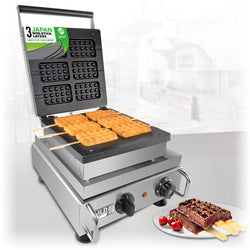HOW VIENNESE WAFFLES DIFFER FROM BELGIAN ONES?
Waffles are a popular breakfast meal that always makes us smile. Although old reliable recipes of cooking waffles with buttered crispy crust, dipping syrup, and airy dough inside, melting in your mouth, never gets old, this dessert is also a great scope for unconventional thinking.

Regardless of how the gourmet treat is made, it adds something special to breakfast. Everyone loves to eat waffles, especially when waffles are served with favourite toppings. You can't go wrong if you serve this delicious meal on a weekend morning or after a fun dinner with friends when it's time to choose a dessert.
Despite the fun and exciting atmosphere that waffles create, few people know their types. The fragrant biscuit-shaped pastry decorated with a pattern can easily be divided into two types:
- Belgian waffles
- and 'ordinary waffles.
Belgian waffles differ from ordinary ones because there are different ways of cooking them. The recipes depend on the design and size of the waffles. Here are some differences between Belgian waffles and ordinary ones:
- In Belgian waffle recipes, yeast rather than a leavening agent is used. The yeast makes a Belgian waffle lighter. The waffles are cooked in such a way that they have the structure hard enough to hold the filling, with a soft, fluffy interior due to the airy dough. This also increases the surface area of the waffles, making them larger.
- Ordinary waffles, on the other hand, are baked with a leavening agent. They are flatter, denser, and crispier.
- Belgian waffles have deep cells. This allows them to hold more syrup, honey, chocolate, jam, fruit, etc. Each delicious slice of Belgian waffle can hold 'more' of everything.
Conventional waffles have small cells.
Depending on whether you prefer thick and fluffy Belgian waffles or thin and crispy traditional American-style waffles, there are dozens of different waffle makers of all shapes and sizes. American-style waffles, which are usually served for breakfast, are made in a smaller waffle maker, whereas Belgian waffle makers are much larger in size, with deeper holes and larger loops. This is what gives Belgian waffles a thicker shape and a more airy texture. Conventional waffle makers have a smaller grid, which makes the waffles thinner.








